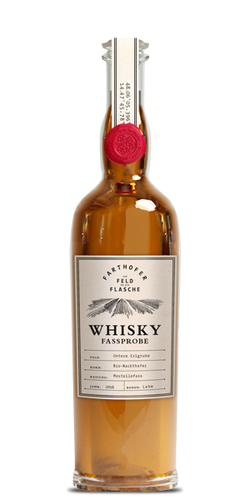

Singin' In The Grain Vol.2
 Only 4 left •Last few at this price. Grab it now!
Only 4 left •Last few at this price. Grab it now!
Flaviar Black Membership (£40/year) will be added, unlocking reduced prices on select products and other perks.
Flaviar Black Members have exclusive access to hundreds of specially priced bottles. Sure you don’t want it?
- CategoryWhisk(e)y
- Volume 3 x 50ml
Whisky Grains Gone Rogue
We’re singing in the grain, just singin' in the grain
What a glorious feeling, we’re happy again…
Why? Because distilleries are going rogue with the grains they’re using. And trust us when we say, your Whisky’s going to be all the better for it.
Yep, distilleries are venturing off the beaten path with their grains and experimenting with different finishes. Like crazy vigilantes in pursuit of liberty, justice and a damn good dram. Truth is, different grains yield different tastes. And a lot of distilleries are getting funky with things like quinoa, millet and oats.
"Don’t oats belong in a bowl with berries and god awful 7 a.m. wake-up call."
That works, too. But it also gives Whisky a phenomenal creamy taste. Experimentation with different grains and finishes are producing some great results. Need proof? Look no further than the Rye renaissance and American Single Malt movement that's spreading from the U.S. to the rest of the world right now. Whisky drinkers are really taken with its spicy kick.
The clean and bright Koval 100% Millet from Chicago is a great place to start riding that wave. To stretch your wings somewhere a tad more exotic, look for Bain's Cape Mountain Single Grain Whisky a.k.a. a tasty double-aged Whiskey from South Africa that’s made from 100% locally sourced yellow maize. Wrap the grainy (Just kidding, it’s actually very smooth.) trip up with Farthofer Bio-Nackthafer 2016, made from 100% organic naked oats, grown on the distillery’s farm in Germany.
Time to taste, eh?
Smartass Corner:
1) What’s in a grain? When it comes to Grain Whisky, it’s traditionally corn, wheat, rye or non-malted barley. But truthfully, you can make a Whisky out of just about any grain you have on hand, including oats and… quinoa. Yeah, that healthy stuff your significant other makes you eat.
2) Buckwheat is actually a seed, not a grain. In most countries, a Spirit made from buckwheat can’t officially be called Whisky. The only exception? Believe it or not, it’s France. Oui, oui!
3) Now if you’re talking about Malt Whisky, you’re narrowing down the prospects to solely malted barley. And it’s more expensive to produce than a Grain Whisky. So prepare to shell out a bit more from your pocketbook.
4) A few years ago, there was some talk about a Single Malt Scotch Whisky shortage, but turns out, much of it was overblown. Besides, there’s plenty of perfectly delicious blended Whisky out there to whet your whistle.
5) Japan, however, is experiencing a bit of a shortage in the Malt Whisky department. But they’re a resourceful sort, ya know. Distilleries like Suntory are experimenting with grains to see what flavor profiles they can build and using different casks for maturation. That’s a can-do spirit we can toast to.
6) Believe it or not, the Japanese have even looked to rice as a source for their Whisky. Which is maybe not entirely surprising since the grain is such a staple in their diet. Light and delicate, rice Whiskies are worth experimenting with. Just don’t call it sake.
7) Millet is known for growing in arid regions and is used to make "millet-Beer" in the Far East. As a grain for distilling, it is a fairly popular base for Spirits in Nepal and Central-Eastern Europe.
This product is available in:
Note: Once an order has been safely & successfully delivered, we do not accept returns due to change of heart or taste. Due to state regulations, we cannot accept the return of alcohol purchased by a customer in error.
Whats in the box?





























